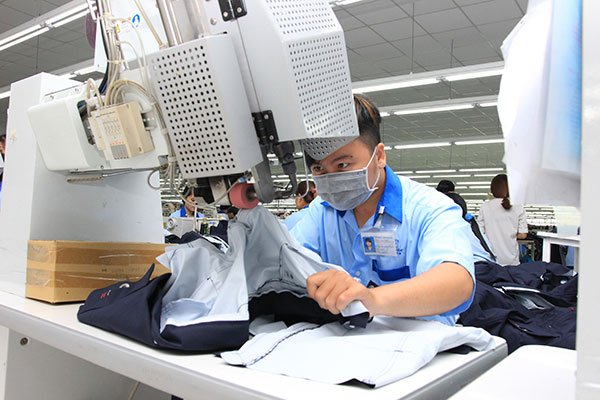Textile-garment trade surplus may hit US$15.5 billion this year
Vietnam’s textile and garment sector may have a trade surplus of US$15.5 billion on total export revenue of US$31 billion this year, said Vu Duc Giang, chairman of the Vietnam Textile and Apparel Association (VITAS).
 |
|
The Vietnam Textile and Apparel Association forecasts that Vietnam’s textile and garment export revenue might reach US$31 billion this year and the number is expected to increase to US$33.5-34 billion next year |
At a press conference in HCMC on December 11, Giang said the sector has gained strong export growth this year, at 10.23% versus 2016, and the momentum is to continue into next year with export earnings expected at US$33.5-34 billion.
The sector has faced multiple challenges early this year, but the situation has changed for the better since the second quarter of this year, Giang said.
Of the total export revenue of this year estimated at US$31 billion, textiles and garments contribute an estimated US$25.91 billion, fabrics US$1.07 billion and cotton US$3.51 billion.
Local enterprises have tapped new markets including China, Russia and Cambodia while maintaining traditional markets such as the U.S., the EU, Japan and South Korea. It is noteworthy that local firms have managed to switch production, from processing exports for foreign firms to FOB (free on board) and ODM (original design manufacturing), Giang added.
Commenting on next year’s business, Giang said many textile and garment firms have signed big export contracts enough for production in the first haft of next year and buyers of these products have shown their confidence in product quality and delivery time of Vietnamese firms.
To achieve the target for next year, VISTA advised textile and garment enterprises to change their production methods meeting requirements of import markets, enhance competitiveness, invest in new techniques and technologies, diversify products and build links among enterprises.
However, Giang said the price competition will be tough as many other countries have also sought to undercut Vietnam, especially apparel manufacturers from China, Bangladesh, Sri Lanka, Myanmar and Cambodia. Therefore, local enterprises have to ensure the supply and have high-skilled workers, invest in modern equipment and step up automation.
According to VISTA, domestic firms have to import 86% of fabrics for garment production as locally-produced fabrics have not met standards of major import markets, while locally-produced fabrics are subject to taxes while imported fabrics used for export processing are tax-free.
The textile and garment sector is also experiencing difficulties due to rising production and labor costs. For example, expenditures on social and health insurance in Vietnam are 2.5 times higher than in other regional countries.
VITAS has proposed the Government adjust policies on salary, insurance, administrative procedures and inspections to help textile and garment enterprises overcome difficulties.
Vietnam currently has nearly 6,000 textile and garment enterprises with 2.5 million employees.

